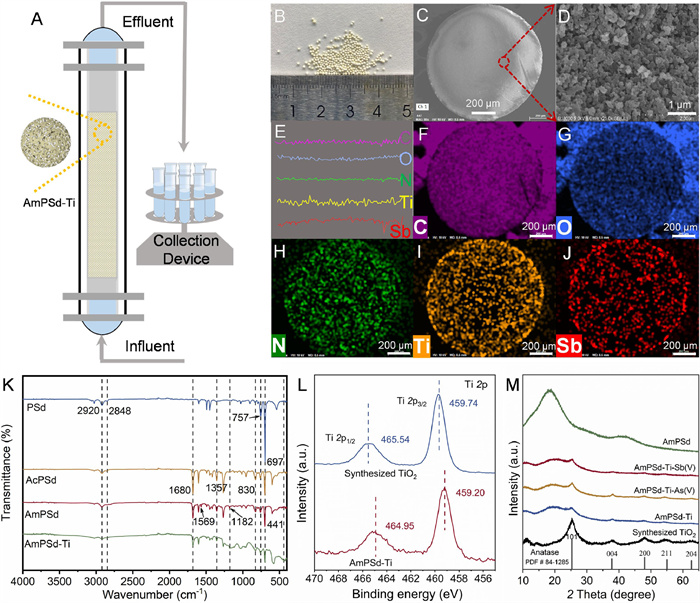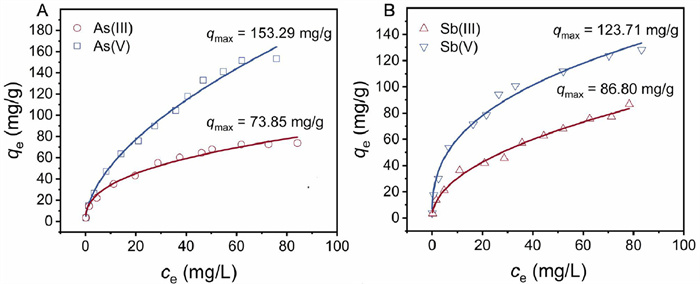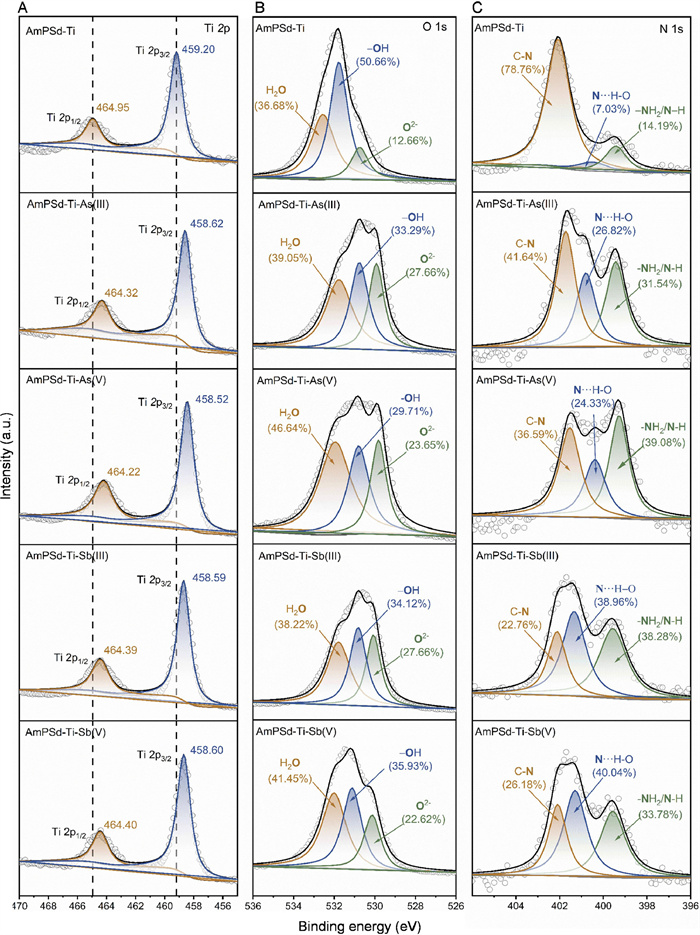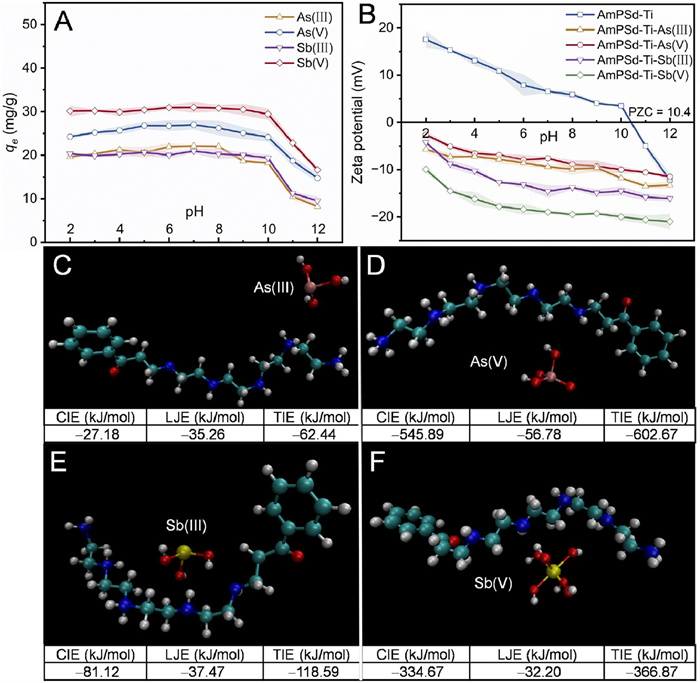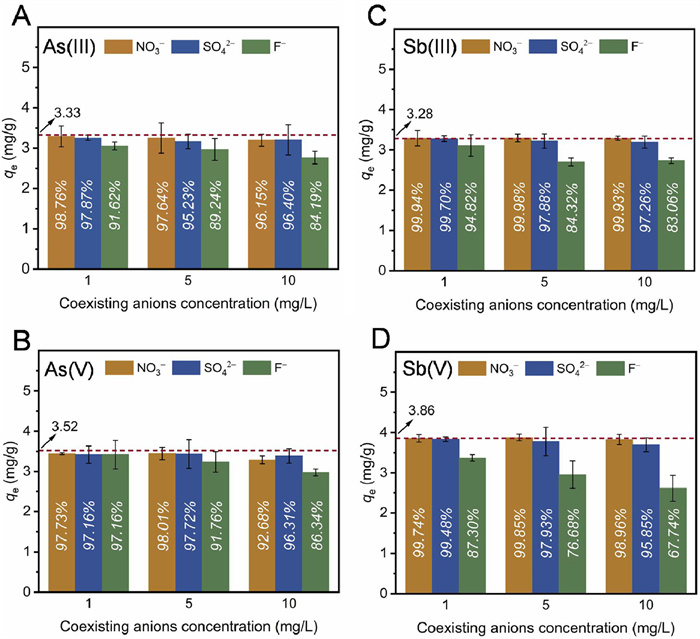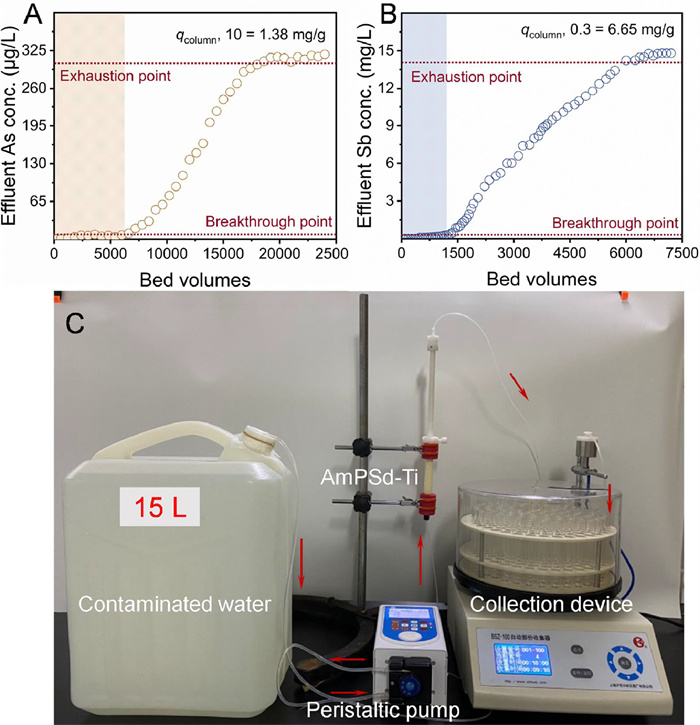-
[1]
J. Podgorski, M. Berg, Science 368 (2020) 845-850.
doi: 10.1126/science.aba1510
-
[2]
L. Yan, T. Chan, C. Jing, Environ. Sci. Technol. 56 (2022) 3138-3146.
doi: 10.1021/acs.est.1c07801
-
[3]
X. Cai, L.K. ThomasArrigo, X. Fang, et al., Environ. Sci. Technol. 55 (2021) 1319-1328.
doi: 10.1021/acs.est.0c05329
-
[4]
Y. Meng, J.N. Wang, C. Cheng, et al., Chin. Chem. Lett. 23 (2012) 863-866.
-
[5]
Q. Zhang, X. Tan, T. Yu, Chin. Chem. Lett. 34 (2023) 107748.
-
[6]
T. Davydiuk, J. Tao, X. Lu, et al., Environ. Health 1 (2023) 236-248.
doi: 10.1021/envhealth.3c00090
-
[7]
Y. Zhang, C. Ding, D. Gong, et al., Environ. Technol. Innov. 24 (2021) 102026.
-
[8]
Y. Li, M. Zhang, R. Xu, et al., Environ. Int. 153 (2021) 106522.
-
[9]
M.A. Dovick, R.S. Arkle, T.R. Kulp, et al., Environ. Sci. Technol. 54 (2020) 7983-7991.
doi: 10.1021/acs.est.0c00558
-
[10]
K. Wan, T. Fang, W. Zhang, et al., Chem. Eng. J. 465 (2023) 143018.
-
[11]
M. Yan, Y. Xi, N. Jiang, et al., J. Membr. Sci. 703 (2024) 122847.
-
[12]
X. Li, J. Fan, F. Zhu, et al., J. Hazard. Mater. 471 (2024) 134302.
-
[13]
M. Mitrakas, Z. Mantha, N. Tzollas, et al., Water 10 (2018) 1328-1339.
doi: 10.3390/w10101328
-
[14]
Y. Liu, C. Li, Z. Lou, et al., Sep. Purif. Technol. 275 (2021) 119037.
-
[15]
X. Zhu, W. Jiang, W. Cui, et al., Chin. Chem. Lett. 30 (2019) 1133-1136.
-
[16]
A.P. Panda, P. Rout, K.K. Jena, et al., J. Mater. Chem. A 7 (2019) 9933-9947.
doi: 10.1039/c9ta00428a
-
[17]
S. Fajal, W. Mandal, S. Mollick, et al., Angew. Chem. Int. Ed. 61 (2022) e202203385.
-
[18]
S. Hu, Q. Shi, C. Jing, Environ. Sci. Technol. 49 (2015) 9707-9713.
doi: 10.1021/acs.est.5b01520
-
[19]
L. Yan, J. Song, T. Chan, et al., Environ. Sci. Technol. 51 (2017) 6335-6341.
doi: 10.1021/acs.est.7b00807
-
[20]
T.T. Lim, P.S. Yap, M. Srinivasan, et al., Crit. Rev. Environ. Sci. Technol. 41 (2011) 1173-1230.
doi: 10.1080/10643380903488664
-
[21]
M.E. Pena, G.P. Korfiatis, M. Patel, et al., Water Res. 39 (2005) 2327-2337.
-
[22]
T. Zhao, Z. Tang, X. Zhao, et al., Environ. Sci. 6 (2019) 834-850.
doi: 10.1039/c8en00869h
-
[23]
S.M. Miller, J.B. Zimmerman, Water Res. 44 (2010) 5722-5729.
-
[24]
Y.X. Ma, D. Xing, C.P. Lu, et al., Polym. Compos. 39 (2018) 2232-2240.
doi: 10.1002/pc.24187
-
[25]
M. Wang, M. Fu, J. Li, et al., Chin. Chem. Lett. 35 (2024) 108442.
-
[26]
O.S. Chowdhury, P.J. Schmidt, W.B. Anderson, et al., Environ. Health 2 (2024) 441-452.
doi: 10.1021/envhealth.3c00174
-
[27]
S. Wang, N.S. Al-Hasni, Z. Liu, et al., Environ. Health 2 (2024) 688-701.
-
[28]
L. Zhang, S. Lou, X. Hao, et al., Sep. Purif. Technol. 303 (2022) 122253.
-
[29]
S. Liu, A. Motta, M. Delferro, et al., J. Am. Chem. Soc. 135 (2013) 8830-8833.
doi: 10.1021/ja4039505
-
[30]
K.A. Gebru, C. Das, Chemosphere 191 (2018) 673-684.
-
[31]
E. Bayer, X.N. Liu, U. Tallarek, et al., Polym. Bull. 37 (1996) 565-572.
-
[32]
Q. Teng, S. Ma, M. Ni, et al., Water. Sci. Technol. 82 (2020) 440-453.
-
[33]
A.K. Rappe, C.J. Casewit, K.S. Colwell, et al., J. Am. Chem. Soc. 114 (1992) 10024-10035.
doi: 10.1021/ja00051a040
-
[34]
T. Lu, F. Chen, J. Comput. Chem. 33 (2012) 580-592.
doi: 10.1002/jcc.22885
-
[35]
M.J. Abraham, T. Murtola, R. Schulz, et al., SoftwareX 1-2 (2015) 19-25.
-
[36]
B. Hess, H. Bekker, H.J.C. Berendsen, et al., J. Comput. Chem. 18 (1997) 1463-1472.
-
[37]
W. Humphrey, A. Dalke, K. Schulten, J. Mol. Graph. 14 (1996) 33-38.
-
[38]
Q. Shi, Y. Mi, S. Wang, et al., Fuel 358 (2024) 130250.
-
[39]
A. Kawasaki, J. Furukawa, T. Tsuruta, et al., Polymer 1 (1960) 315-329.
-
[40]
H. Ning, Y. Fan, H. Liu, et al., J. Chromatogr. A 1671 (2022) 462994.
-
[41]
X.N. Liu, E. Bayer, G. Xue, Spectrosc. Lett. 30 (1997) 289-295.
doi: 10.1080/00387019708006988
-
[42]
P. Liu, Y.B. Hu, X.Y. Li, et al., Angew. Chem,. Int. Ed. 61 (2022) e202208587.
-
[43]
Y. Zhao, X. Shan, Q. An, et al., Chem. Eng. J. 398 (2020) 125561.
-
[44]
A. Modwi, N.M. Basith, M.G. Ghoniem, et al., Mater. Sci. Eng. B 289 (2023) 116191.
-
[45]
L. Ma, L.-J. Yu, J. Liu, et al., Energy Storage Mater. 44 (2022) 180-189.
doi: 10.3390/separations9070180
-
[46]
V. Etacheri, M.K. Seery, S.J. Hinder, et al., Chem. Mater. 22 (2010) 3843-3853.
doi: 10.1021/cm903260f
-
[47]
X. Zeng, L. Huang, C. Wang, et al., ACS Appl. Mater. Interfaces 8 (2016) 20274-20282.
doi: 10.1021/acsami.6b05746
-
[48]
N.T. Nolan, D.W. Synnott, M.K. Seery, et al., J. Hazard. Mater. 211-212 (2012) 88-94.
-
[49]
Y. Liu, M. Ren, X. Zhang, et al., Appl. Surf. Sci. 614 (2023) 156118.
-
[50]
S. Wang, Z. Xiao, S. Zhai, et al., J. Mater. Chem. A 7 (2019) 17345-17356.
doi: 10.1039/c9ta05145g
-
[51]
Y. Wang, J. Liang, S. Liu, et al., Langmuir 40 (2024) 9265-9279.
doi: 10.1021/acs.langmuir.4c00702
-
[52]
Y. Cao, Q. Guo, M. Liang, et al., Appl. Surf. Sci. 196 (2020) 105766.
-
[53]
B. Liu, Z. Liu, H. Wu, et al., Sci. Total Environ. 742 (2020) 140508.
-
[54]
X. Shan, L. Yang, Y. Zhao, et al., J. Colloid Interface Sci. 606 (2022) 736-747.
-
[55]
M.J. Ahmed, S.K. Theydan, J. Anal. Appl. Pyrolysis 99 (2013) 101-109.
-
[56]
S.G. Johnston, W.W. Bennett, N. Doriean, et al., Sci. Total Environ. 710 (2020) 136354.
-
[57]
G. Okkenhaug, Y.G. Zhu, J. He, et al., Environ. Sci. Technol. 46 (2012) 3155-3162.
doi: 10.1021/es2022472
-
[58]
M. He, N. Wang, X. Long, et al., J. Environ. Sci. 75 (2019) 14-39.
-
[59]
L. Yan, S. Hu, C. Jing, J. Environ. Sci. 49 (2016) 74-85.
-
[60]
M. Filella, N. Belzile, Y.-W. Chen, Earth-Sci. Rev. 57 (2002) 125-176.
-
[61]
M.A. Dovick, T.R. Kulp, R.S. Arkle, et al., Environ. Chem. 13 (2016) 149-159.
-
[62]
H. Wang, C. Qiao, C. Chen, et al., Chin. Chem. Lett. 36 (2025) 110244.
doi: 10.1016/j.cclet.2024.110244
-
[63]
G.M. Walker, L. Hansen, J.A. Hanna, et al., Water Res. 37 (2003) 2081-2089.
-
[64]
Z. Wang, X. Bi, X. He, et al., Water Res. 228 (2023) 119290.
-
[65]
D. Mitoraj, H. Kisch, Angew. Chem. Int. Ed. 47 (2008) 9975-9978.
doi: 10.1002/anie.200800304
-
[66]
H. Guo, Q. Fei, M. Lian, et al., Adv. Mater. 35 (2023) e2301418.
-
[67]
L. Ma, S.X. Tu, Environ. Chem. Lett. 9 (2011) 465-472.
doi: 10.1007/s10311-010-0303-1
-
[68]
X. Song, L. Nong, Q. Zhang, et al., J. Environ. Chem. Eng. 11 (2023) 110874.
-
[69]
K. Liu, Z. Huang, J. Dai, et al., Chem. Eng. J. 382 (2020) 122775.
-
[70]
L. Xiaojing, T. Wang, M. He, Environ. Tech. 44 (2022) 1-33.
doi: 10.21656/1000-0887.420388
-
[71]
L. Zhang, R. Li, L. Zhou, et al., Environ. Technol. Innov. 24 (2021) 102001.
-
[72]
X. Long, T. Wang, M. He, Environ. Technol. 44 (2023) 2913-2923.
doi: 10.1080/09593330.2022.2048084
-
[73]
J. Zheng, L. Li, S. Chen, et al., Langmuir 20 (2004) 8931-8938.
-
[74]
National Primary Drinking Water StandardsCriteria and Standards Division, U.S. Environmental Protection Agency, Washington DC, 2009.
-
[75]
Standardization Administration of ChinaEmission Standards of Pollutants for Stannum, Antimony, and Mercury Industries, Science Press of the Chinese Academy of Sciences, GB 30770-2014, Beijing, 2014.
-
[76]
J. Chen, L. Hu, Q. Chen, et al., Surf. Interfaces 46 (2024) 104184.
-
[77]
A. Farsad, M. Marcos-Hernandez, S. Sinha, et al., Environ. Sci. Technol. 57 (2023) 20410–20420.
doi: 10.1021/acs.est.3c06586
-
[78]
R. Duan, L. Tian, Y. Liu, et al., Sep. Purif. Technol. 343 (2024) 127187.

 Login In
Login In







 DownLoad:
DownLoad:
